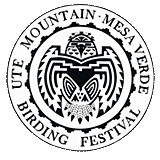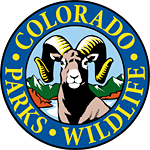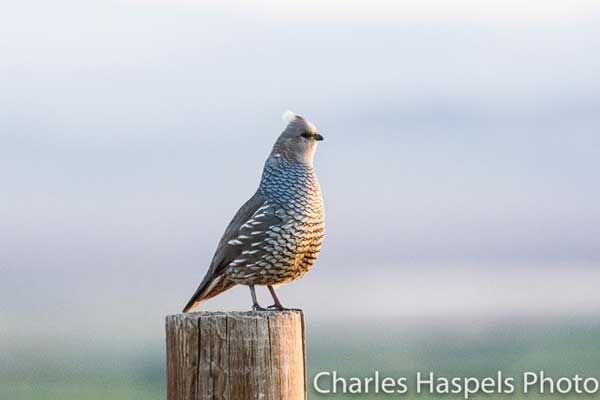
Photo courtesy of Charles Haspel
Only 1 Space Remaining!NEWRETURNINGREVISEDEXPANDEDSOLD OUT!TOUR #4
Don Marsh, Senior Systems Analyst, Retired and eBird Reviewer
5:45 am – 3:00 pm; $80
Combine birding with experiencing Mancos Canyon’s archaeological sites. Saltbush and sage bottomlands invite Sage Thrasher, Burrowing Owl, Scaled & Gambel’s quails and Lark, Sage & Black-throated sparrows. Willows and cottonwoods along the stream bed attract Yellow-breasted Chat, tanagers, warblers, Indigo & Lazuli buntings and Blue Grosbeaks. Glyph-inscribed cliffs provide habitat for raptors, swifts, wrens and owls. Bridges may harbor nesting Black Phoebes. Vireos and flycatchers also frequent the pinyon-juniper uplands. (43 species in 2023) Easy. Lunch while overlooking ancient cliff dwellings. Tour fee includes park entrance and a tip for the Ute Tribal guide. Approximately 50 miles round trip.
Only 1 Space Remaining!NEWRETURNINGREVISEDEXPANDEDSOLD OUT!TOUR #5
Paul Morey, Chief of Natural Resources, Mesa Verde National Park
6:00 am – 3:00 pm; $55
Explore this secluded, pristine terrain along the Mancos River with Mesa Verde’s wildlife biologist. Besides learning the history of this part of MVNP, discuss future restoration and management of the area. Travel mostly off-trail on flat to uneven terrain through grass, big sage & juniper uplands and riparian areas dominated by willow and cottonwoods. Past species: Wild Turkey, raptors, flycatchers, swallows, Black-chinned & Broad-tailed hummingbirds, Plumbeous Vireo, Yellow-breasted Chat, Yellow, Yellow-rumped & Black-throated Gray warblers and Lazuli Bunting. (60 species, 2019) Moderate hike, up to three miles round trip. Lunch provided. Approximately 55 miles round trip.
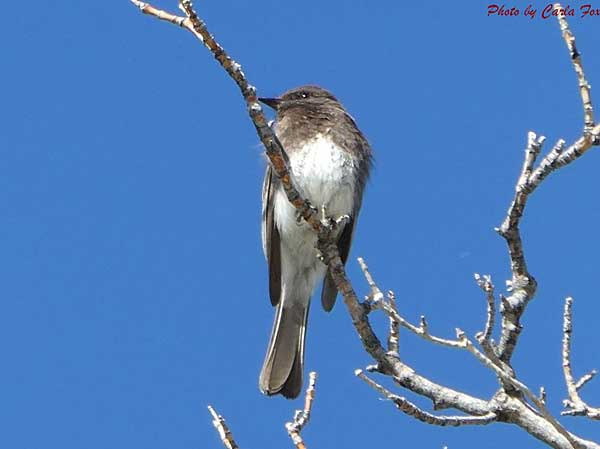
Photo courtesy of Carla Fox
Only 1 Space Remaining!NEWRETURNINGREVISEDEXPANDEDSOLD OUT!TOUR #6

John Bregar, Oil & Gas Geologist/Geophysicist, Retired
6:15 am – 3:00 pm; $55
Lost Canyon lies tucked between Haycamp Mesa and the flat lowlands north of Mesa Verde. This riparian corridor, which served early ranchers and loggers as the historic route for a narrow- gauge railroad and the Galloping Goose, attracts passerines and flycatchers. The beautiful stands of ponderosa forest are home to Grace’s Warbler, nuthatches, woodpeckers and accipiters. Summit Lake State Wildlife Area and Puett Reservoir attract waterfowl and shorebirds. The willows and trees surrounding the lakes harbor warblers, sparrows, flycatchers, bluebirds and more. (56 species in 2023) SWA pass included. Easy road and trail hiking. Lunch provided. Approximately 75 miles round trip.
Only 1 Space Remaining!NEWRETURNINGREVISEDEXPANDEDSOLD OUT!TOUR #7
Brenda Wright and Coen Dexter, Colorado Birding Atlas II
6:30 am – 3:00 pm; $55
Situated on the Dolores River in a migratory corridor below McPhee Dam, the Bradfield Bridge area offers river habitats that entice a broad array of species including Black Phoebe, Peregrine Falcon, White-throated Swifts, Yellow-breasted Chat, Canyon Wren, Lazuli Bunting, Wild Turkey and Belted Kingfisher. Swallows, warblers, raptors, woodpeckers, waterfowl and shorebirds add to the mix. The scenic sandstone canyon may even offer a sighting of river otters. Tours within this region historically have brought some of the UMMV Birding Festival’s highest species tallies. (68 species in 2023) SWA pass included. Easy. Lunch provided. Approximately 60 miles round trip.
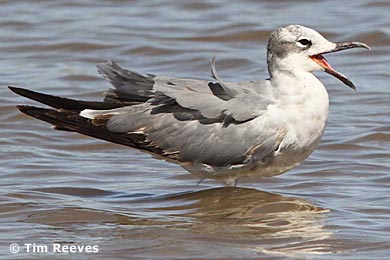
Photo courtesy of Tim Reeves
Only 1 Space Remaining!NEWRETURNINGREVISEDEXPANDEDSOLD OUT!TOUR #8
Erik Hendrickson, Engineer, National Park Service, Retired
6:45 am – 3:00 pm; $55
Totten Reservoir is one of the best places to bird in Montezuma County (eBird Hotspot #1). Constructed in 1907, Totten holds some of the oldest bird records in the county. Look for ducks, grebes, herons, ibis and marsh birds such as Yellow-headed Blackbird and Sora. For the UMMV Birding Festival, the Bureau of Reclamation is allowing participants to visit the wetlands at Simon Draw, normally closed in spring for waterfowl nesting. At Simon Draw, find more ducks, possible migrating shorebirds, Virginia Rail, sparrows and Sage Thrasher in the scrub surrounding the constructed ponds. Bald Eagles and other raptors nest near both Totten and Simon Draw and often are seen hunting. SWA pass included. (33 species in 2023) Easy. Lunch provided. Approximately 10 miles round trip.
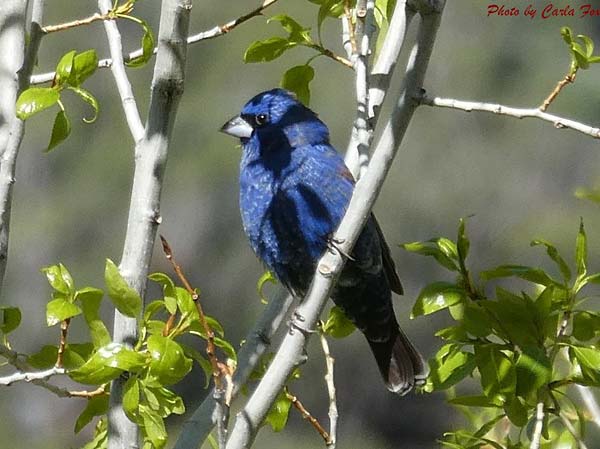
Photo courtesy of Carla Fox
Only 1 Space Remaining!NEWRETURNINGREVISEDEXPANDEDSOLD OUT!TOUR #9
Eric Moore, Owner, The Lookout, Prescott, AZ
7:00 am – 11:30 am; $30
On the south edge of Cortez is public access via a gravel drive to an old wastewater treatment plant, a surprisingly pleasant and productive spot for birding. Orioles and finches can be found in the residential cottonwoods at the top of the drive; and there is PJ and rocky outcrops walking down the drive towards McElmo Creek where we might find wrens, gnatcatchers, or bushtits. The broad base of McElmo canyon at this location is a sagebrush and saltbush plain, with sparrows, finches, corvids, small to large raptors and vultures. The abandoned buildings and fences serve as perches for Say’s Phoebe and other flycatchers. There is a smattering of wetland, and the narrow riparian corridor along the creek might hold warblers, Black-headed & Blue Grosbeak, Lazuli Bunting, swallows, Yellow-breasted Chat and maybe other surprises. Moderate, up to two miles walking. Approximately 4 miles round trip.
LECTURE
Melissa Schreiner, Entomologist, Colorado State University, Tri-River Area
5:30 pm – 6:30 pm
Melissa will highlight the important role animal pollinators play in our southwestern Colorado ecosystems. The biodiverse pollinator species specific to the Four Corners area will be discussed, allowing listeners a glance into their marvelous world, their life cycles, and relationships with local and invasive flora. By showcasing various pollinators like ants, bats, birds, bees, beetles, and flies, Mel will share captivating stories of our natural world and many examples of various pollinator biology. Recommendations on ways that festival attendees can support pollinator conservation efforts in their own gardens and communities will be shared along with insect pollinator specimens from the Western Colorado Insect collection.
) Birding Festival General Information
Birding Festival General Information
- The Ute Mountain Mesa Verde Birding Festival is the major fundraiser for the Cortez Cultural Center. All proceeds benefit the Center.
- All tours require pre-registration.
- A registration fee is required for all tours except as noted. Full registration includes keynote banquet and all lectures. Daily registration includes that day's lectures. Full registration is required in order to qualify for the free early bird t-shirt.
- Unless otherwise noted, tours will return to the Center at approximately 3:00 pm.
- Carpools/caravanning will be used for all tours. Drivers will be reimbursed for gas by passengers at the GSA rate of 66 cents per mile, divided among all participants in the vehicle.
- Tour size is generally 13 or less.
- Cancellations considered on a case-by-case basis up to 21 days prior to start of Festival. All cancellations subject to a processing fee.
- Availability of restrooms depends on the tour. Nearly all guides scout out restroom locations as well as bird species. Some tours are in parks or other facilities that have established restrooms. Some have outhouses. Others, the only option are bushes. Usually, the leader will mention the restroom plan at the beginning of the tour.
- All tours depart from and return to the Cortez Cultural Center.
- Tour times listed are the DEPARTURE time. Please arrive 15 minutes prior.
 Connect with the Birding Festival on Facebook!
Connect with the Birding Festival on Facebook!
![]()
) Birding Festival General Information
Birding Festival General Information![]() Connect with the Birding Festival on Facebook!
Connect with the Birding Festival on Facebook!





